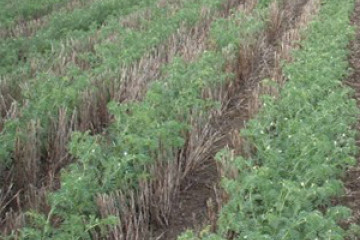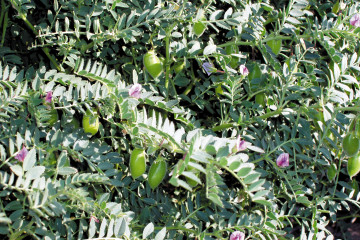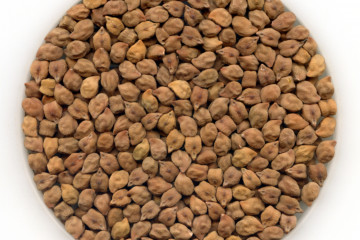Chickpea
Chickpea was first grown in Australia as a commercial crop in Goondiwindi during the early 1970s. It is now an important crop in northern farming systems (NSW and Queensland) and becoming more widely grown in southern (Victoria and South Australia) and western (Western Australia) regions.
There are two groups of chickpea – desi and kabuli – which have different growth requirements, markets and end-uses. Choosing the right variety for the right paddock is central to incorporating chickpea into a cropping rotation to improve profitability and productivity. The resources on this page will help to develop a crop management system suited to your farm and will assist in identifying and solving problems that may occur. Pulse Australia encourages growers to seek out an accredited pulse agronomist who is familiar with pulse production your district and to engage a Pulse Australia member to assist with marketing your grain.
Best management guides
- Northern region guide (from Dubbo, NSW north through Queensland)
- GRDC GrowNote – Chickpea
- Southern & Western region guide – Currently under construction (from Dubbo, NSW south through Victoria and South Australia, and Western Australia)
Rotation benefits
Variety selection
The variety management packages (VMP) below provide information about each variety's yield performance, disease resistance and susceptibility, agronomic traits (such as lodging) and suitable target markets.
| Northern region | Southern region | Western region |
|---|---|---|
DesiKabuli |
DesiKabuli |
DesiKabuli |
Planting guides
- Chickpea best management: Agronomy (northern region)
- Chickpea: Deep planting (northern region only)
- Chickpea: Quality seed
- Pulses: Inoculation
- Pulses: Wide rows and stubble retention
- Pulses: Residual herbicides and weed control
- Pulses: Minimising frost risk
Weed management
Disease management
- Chickpea best management: Disease (northern region)
- Chickpea best management: Problem solver
- Chickpea: Integrated disease management
- Chickpea: Ascochyta blight
- Chickpea: Botrytis grey mould
- Chickpea: Phytophthora root rot
- Chickpea: Sclerotinia
- Pulses: Viruses
Pest management
- Chickpea best management: Pests
- Pulses: Native budworm
- Pulses: Locusts
- Chickpea (northern): Integrated pest management (NIPI Hub)
- Chickpea (southern): Integrated pest management (NIPI Hub)
Desiccation, harvest and storage
- Chickpea best management: Desiccation, harvest and storage
- Pulses: Desiccation and croptopping
- Pulses: Grain storage bags
- Pulses: Fodder options



